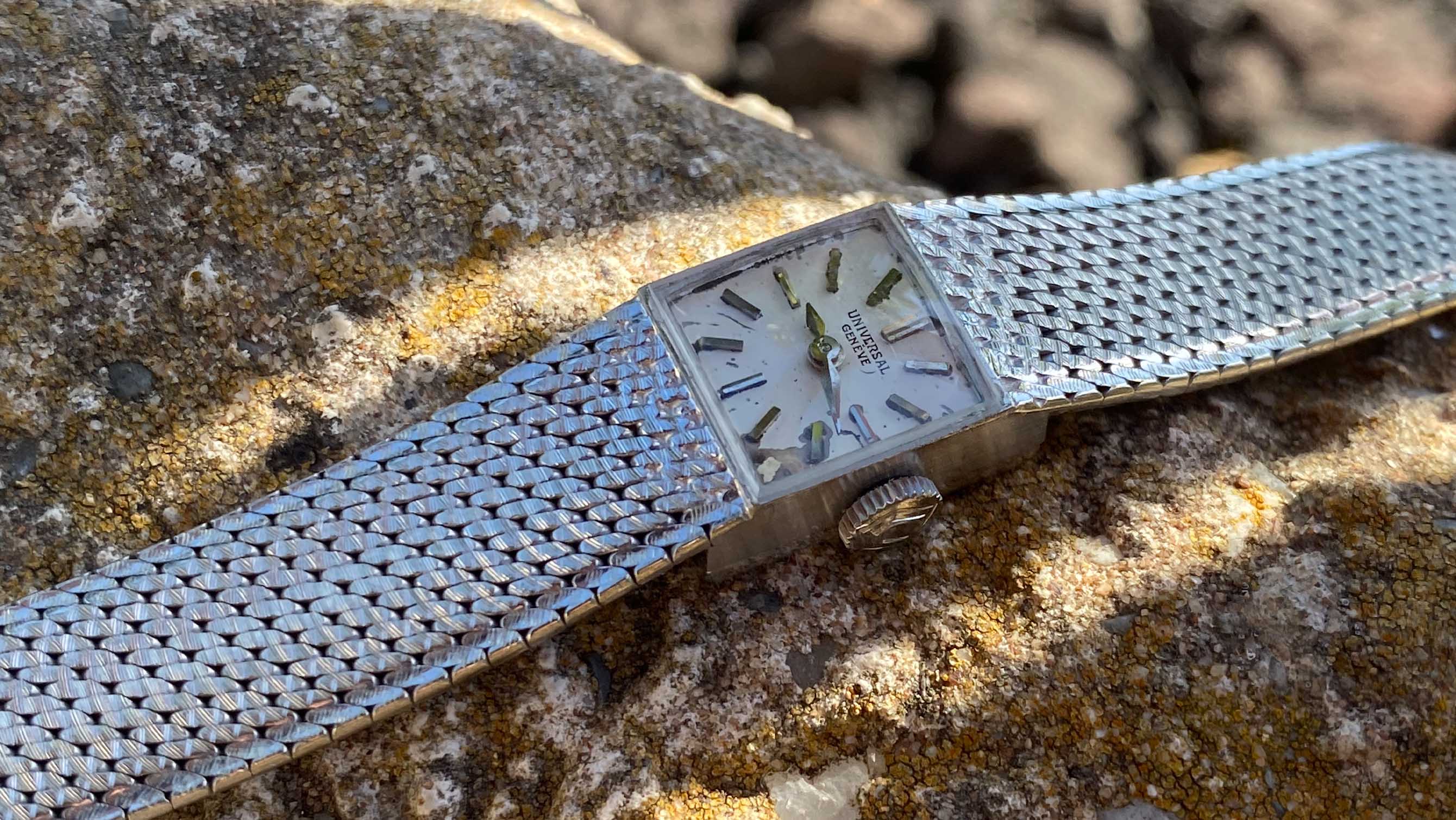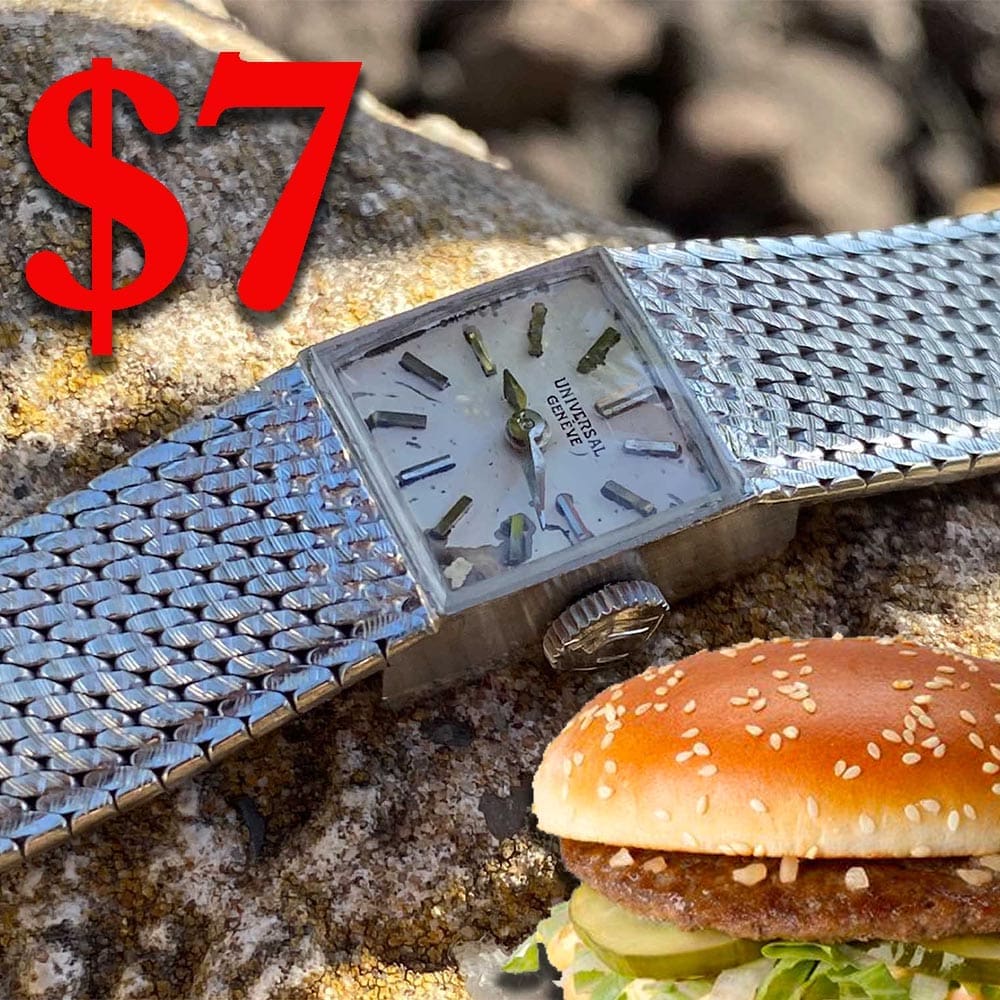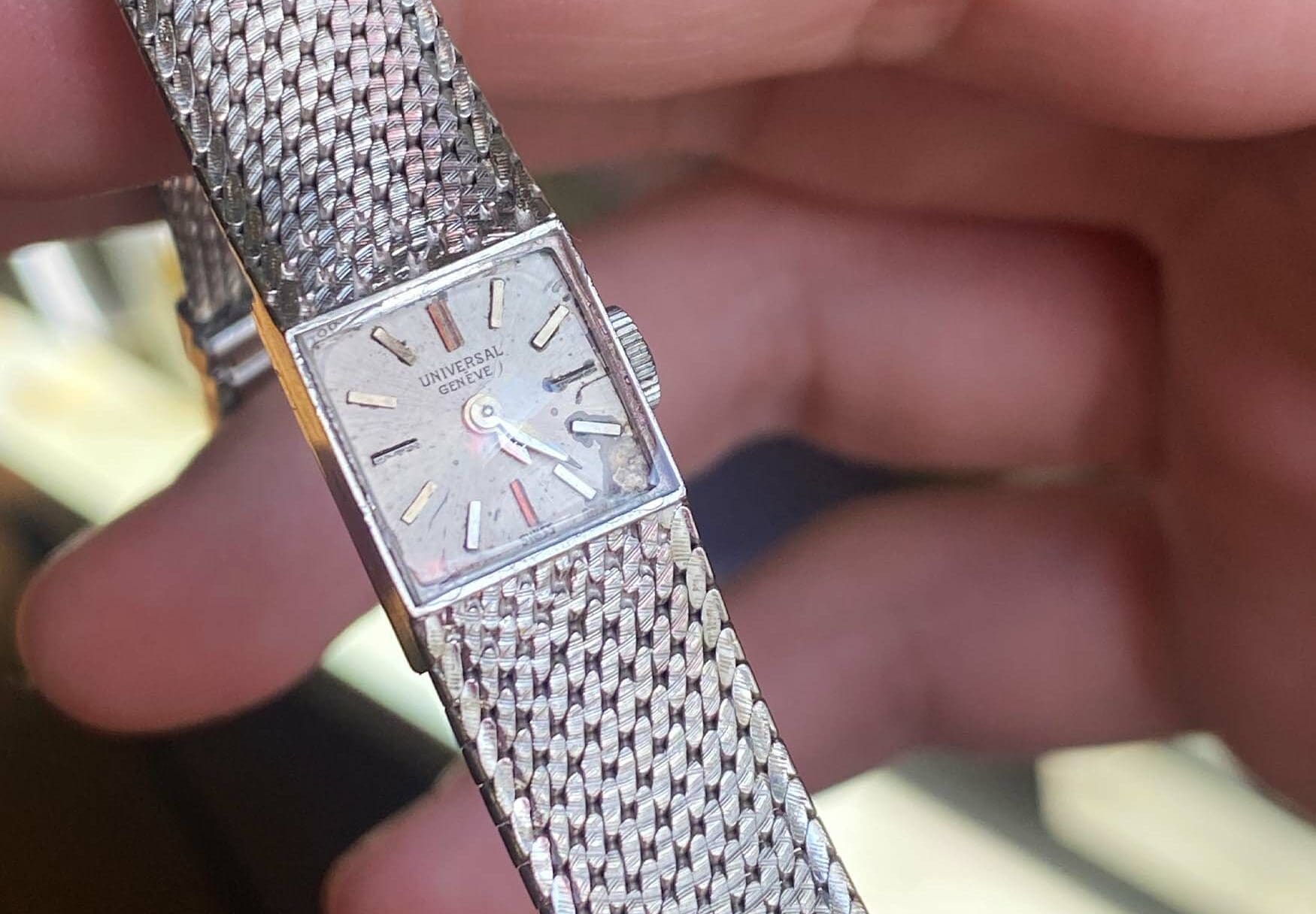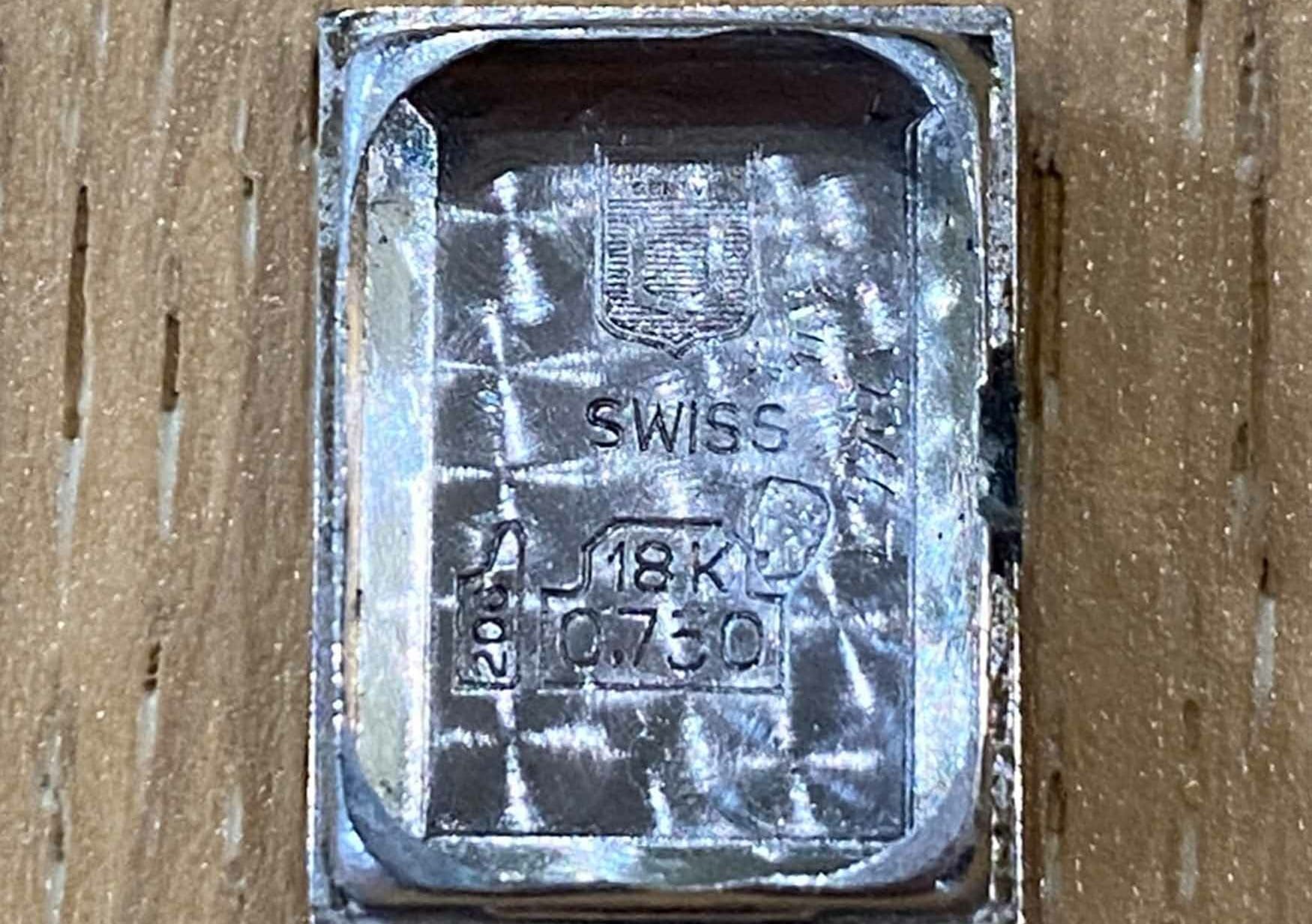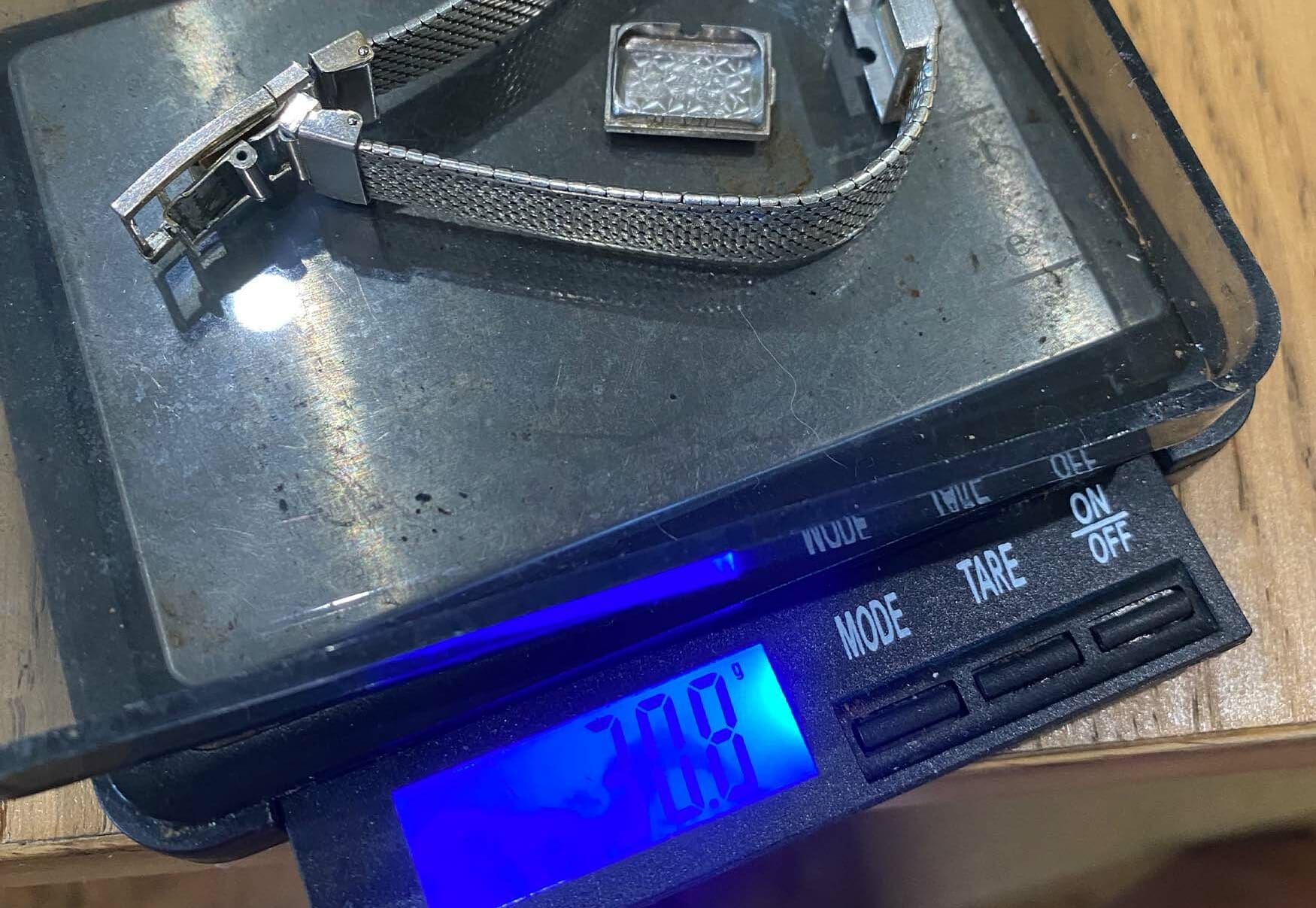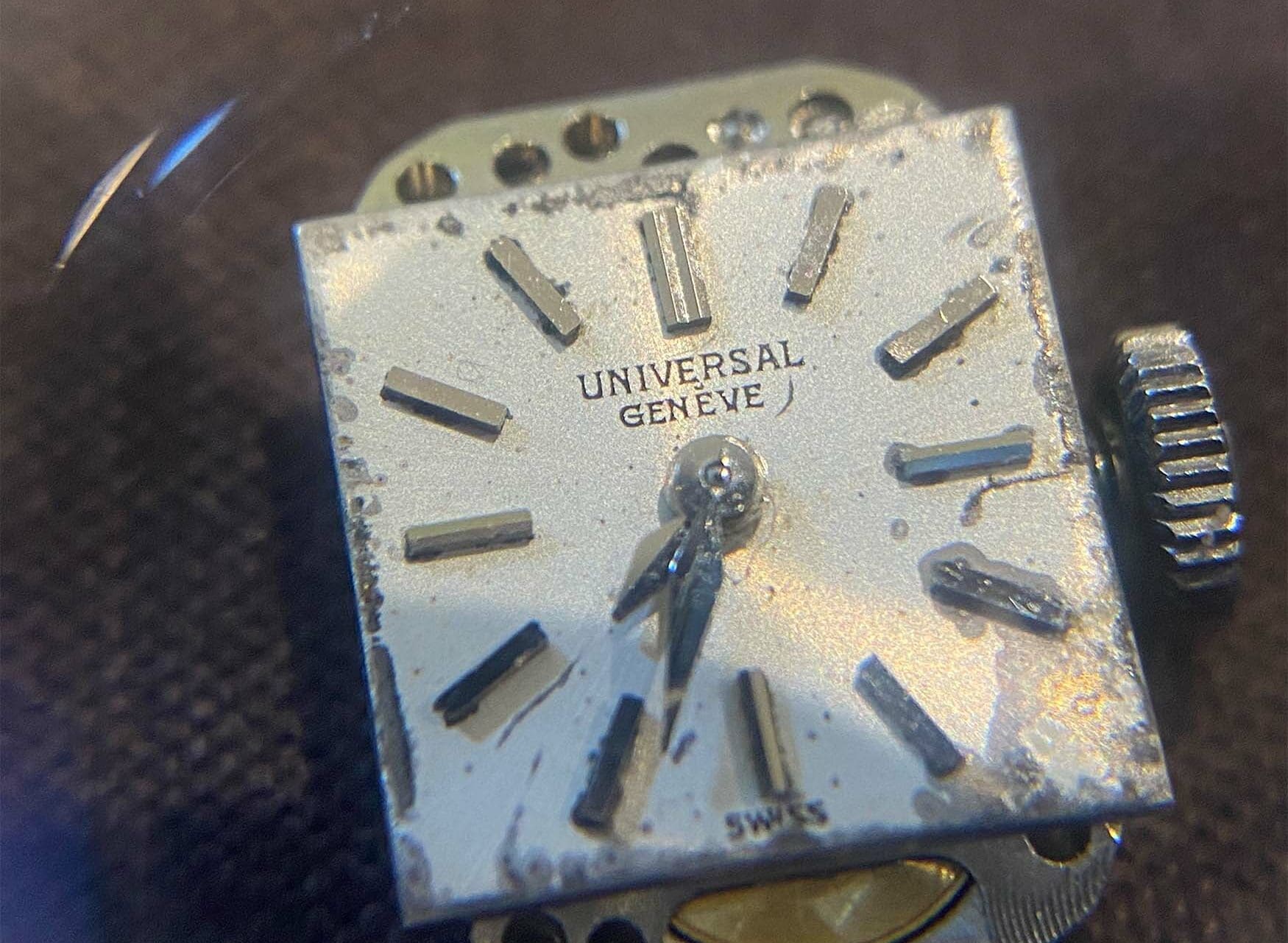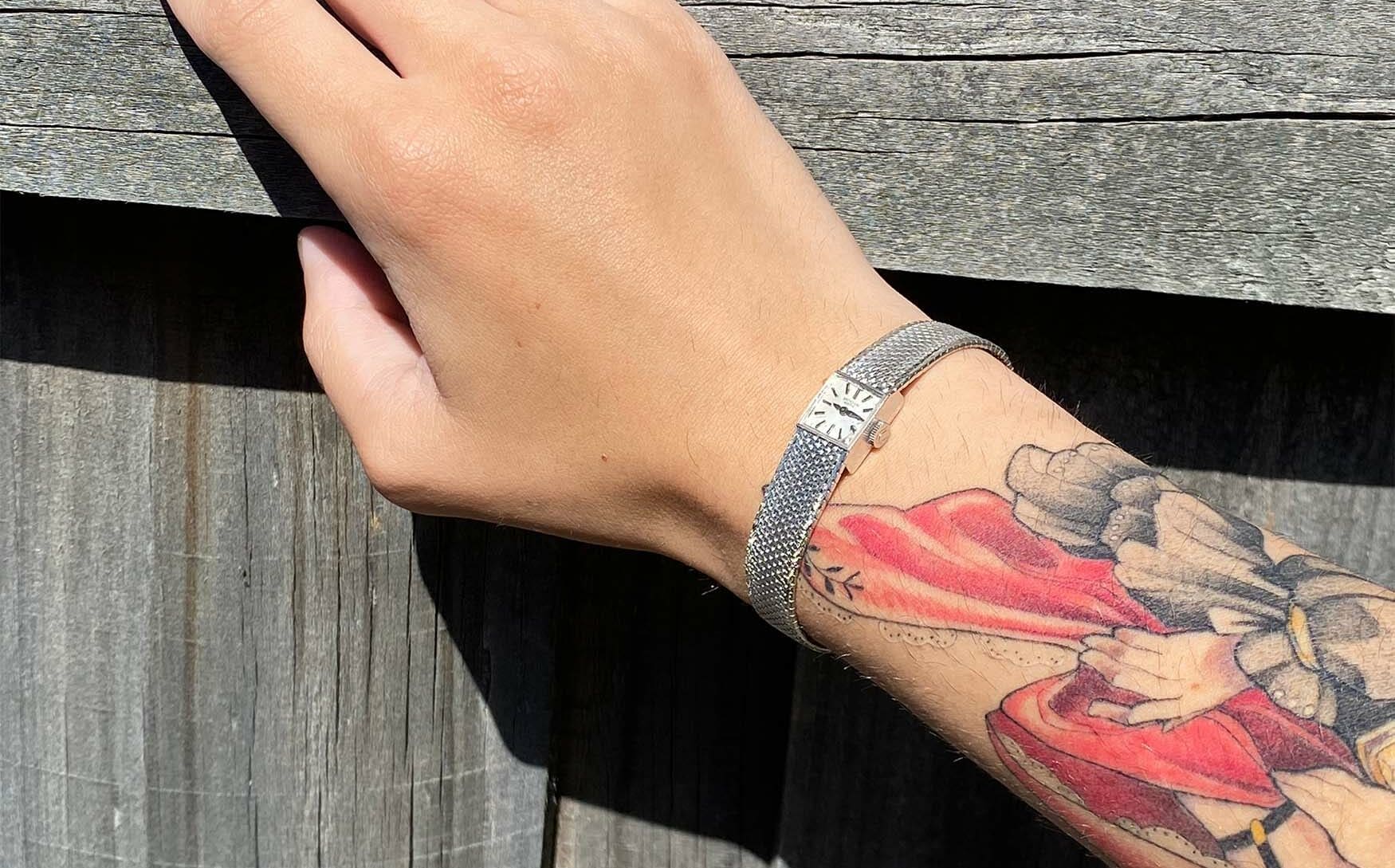I bought a solid gold Universal Genève for less than a Big Mac
Buffy AcaciaWhen I was a kid and it was time to visit my grandparents, I’d stare out of the car window and fantasise about spotting a huge gold nugget on the side of the road. Maybe I’d visited too many 1850s gold rush museums, but part of me really felt like I could be that lucky. Well, last weekend I probably came as close as I’ll ever get to that childhood dream when I found a solid gold Universal Genève in a second hand store for A$6.99. That’s not six hundred and ninety-nine dollars, but six dollars and ninety-nine cents. At the time of writing my local McDonald’s sells Big Macs for A$8.
Now and again I’ll get the urge to drop everything and go op shopping, or thrift shopping for our American readers. Most of the time I don’t beat the Depop and vintage store scalpers to the good stuff and I come home empty-handed, but whenever I do find something good, it feels like the universe has smiled upon me. This particular urge was brought on by my new obsession with antique shell cameos, and I headed straight for the jewellery cabinet. They didn’t have anything, so naturally, I drifted over to the watch display. Most op shops in Victoria have pretty skint watch collections, with maybe five or six in a cabinet and nothing else. This one was different though. This shop had about a hundred on a shelf, and some were quite exciting.
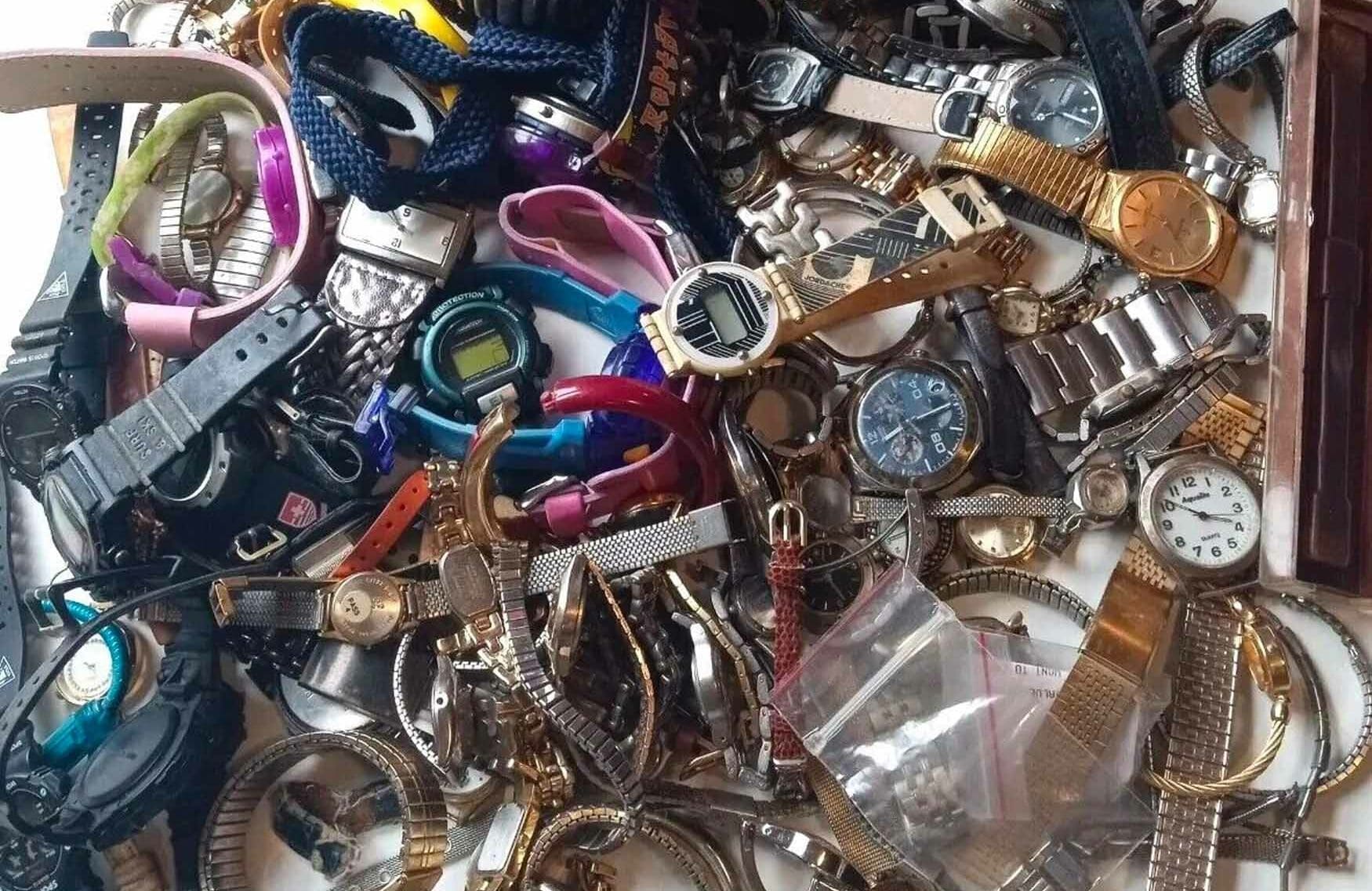
After picking out a few ones that looked promising, the disappointment set in. Some of the bracelets were too small, some didn’t run, and some were vastly overpriced. That’s when the woman at the jewellery counter spoke the magic words, “Would you like to look through the rest?” She brought out two shoebox-sized boxes absolutely filled with watches, which would give most collectors a heart attack to think of the scratches they were accumulating. A huge portion of them were total junk, but I noticed a couple of nice vintage watches floating around the bottom. The first one I came across was a mechanical Titoni, which I was very surprised to see. It was in beautiful condition and ran, so I set it aside to buy for A$7.99, figuring it would probably be worth $50 or so. Then, I saw a complicated mesh bracelet with a dainty little dial. It was missing the crystal and the dial had corroded a fair bit, but I knew I had to buy it when I saw the Universal Genève logo.
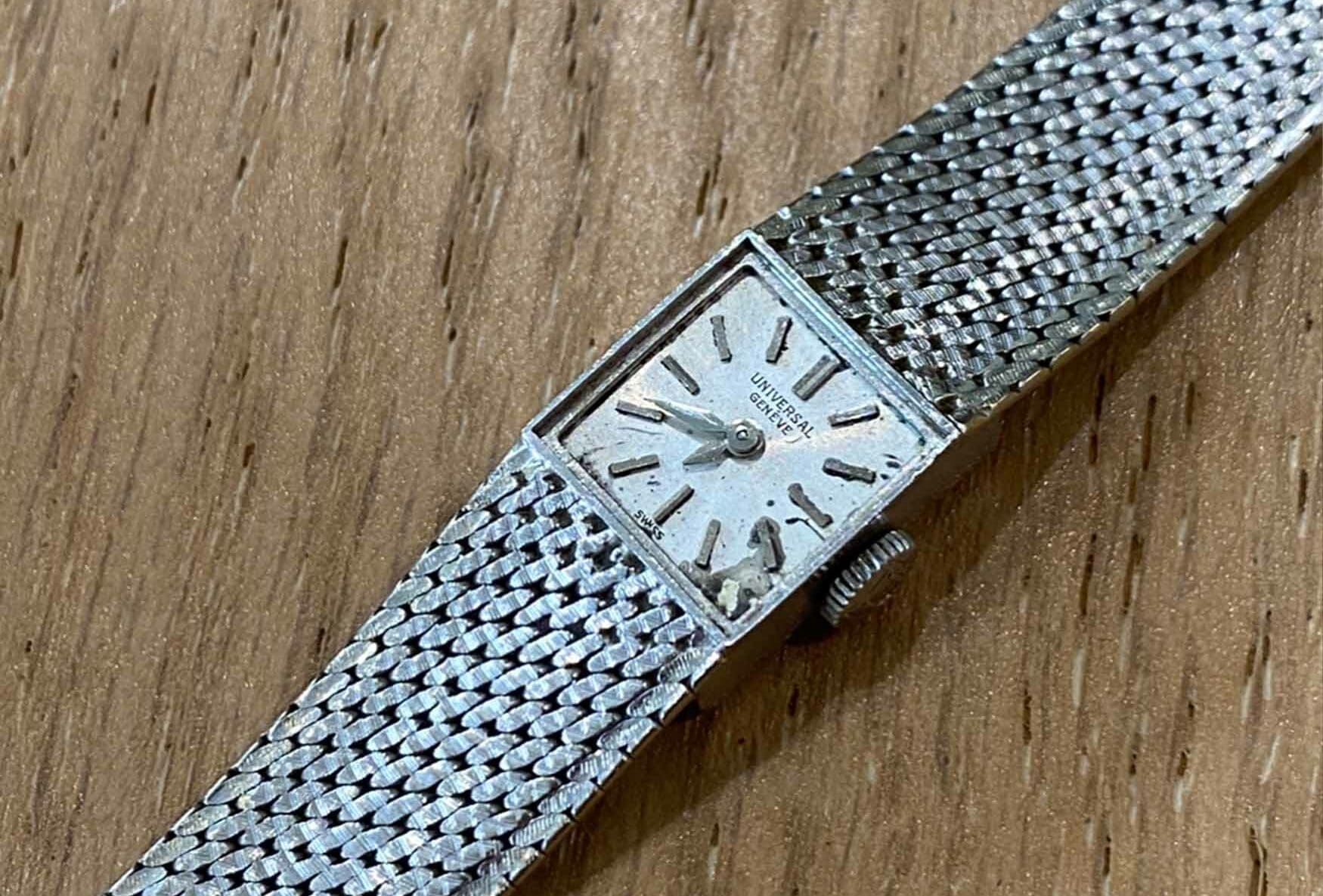
Although I was giddy at finding a vintage Universal Genève with a A$6.99 price tag, the full weight of the discovery hadn’t hit me yet. Neither did the weight of the watch itself, which should have been a dead giveaway once I picked it up. But, I’ve learned that even professional jewellers have a hard time identifying white gold without an XRF Analyser, so I shouldn’t be too hard on myself. Anyway, the watch took a wind and started ticking so I bought it without hesitation. Locate a new crystal and it could be worth a hundred bucks or so, right? As soon as I got home, I knew I had to take a look inside. I wasn’t expecting to see anything other than a nice movement, as I love how creatively shrunken these tiny watch movements are. The outside of the caseback had some serial numbers on it, but googling them led me nowhere. Imagine my shock when I popped the caseback off, took out the movement, and saw a huge hallmark for 18k gold.
That’s when the shock really set in, and I put the puzzle pieces together. I’m not sure why Universal Genève didn’t stamp the outside of the watch at all, but I have to be glad that they didn’t. It’s easy for a layman to mistake an old, white-metal watch with no crystal as a broken bit of junk that’s not even worth sitting in the display cabinet, and even I might have overlooked it if I hadn’t seen the brand name on the dial. I could tell that the heft of the case and integrated bracelet was way more than my stainless steel watches, but it still felt slightly too good to be true. The next day I took it to three jewellers to check it wasn’t a fake, and although the first two couldn’t be sure, the third one used an XRF gun to confirm it was solid 18k white gold. Only parts of the clasps are plated brass, but that’s to be expected for high-wear components. Weighing just the case, bracelet, and caseback, it came in at 30.8 grams. Assuming that the weight of the gold crown and hands are enough to make up for the non-gold clasp, that’s around A$2,300 in scrap value alone.
Aside from the fact that the case and integrated bracelet were solid 18k gold, there was actually quite a lot to learn from the stamps on the caseback. An important factor for me was dating the watch, as I’m a lover of old things, and the older the better. I found a lookup engine for Universal Genève serial numbers between 1930 and 1967, however, it didn’t recognise mine. Women’s watches are often overlooked in archives, as there were so many small variances in the references to keep the fashion fresh. So, I had to find other clues. I did find one example of a 14k gold Universal Genève with the exact same bracelet design, and a case that was also 12mm in diameter although it was only 9mm tall. The serial number lookup dated that watch to 1942, which is a delectable vintage zone for me. The logo stamp inside the caseback is a shield shape with a horizontal line background, and that was used from 1953 and past 1970. Huh? I’d be more inclined to believe the shield stamp date range than the serial number lookup anyway, for the reasons I stated previously. The Helvetia head stamp is just another signifier of the 18k gold status.
The little stamp to the far left helps to show the case maker, and it’s known as the Hammerhead Poinçons de Maître. This one is marked 206, which has been used by five different case makers in La Chaux-de-Fonds. Each of these makers are assigned an ‘Enregistrement’ date, which can be a little bit misleading. This date was simply when the records started being kept at the Central Bureau for the Control of Precious Metals in Bern, so the Poinçons de Maître can actually show up on watches that are older or younger than the Enregistrement date. The only maker with an Enregistrement date post-1953 and pre-1970 is A. Bräuchi & fils with a date of 02.02.1962. The movement is of no help either with no information available about the Universal Genève calibre 402, although our editor Borna suspects that it was manufactured by Jaeger-LeCoultre or Martel – and I can’t confirm nor disprove that. Ultimately, based on the sunburst dial, Art-Deco revival style and alpha hands, my best guess would place this watch in the mid-late ‘50s.
Once I’d finished dancing around my house in joy, I realised that I had a dilemma. The value of the gold is a considerable chunk of money and far more than I’d ever consider spending on a watch in my current financial state. Whether or not I’d wanted to, I’d formed an emotional and aesthetic bond with the watch which involved not only the mind-numbing bargain price but also the looks and the story. It’s one thing to show off a flashy watch to friends so that you can flaunt your wealth, but it’s another to show it off precisely because you didn’t pay what it’s worth. I knew that I wanted to keep it, even though I couldn’t afford to bring it to a watchmaker for a service and a crystal replacement. So, if you want to know how I went about doing a DIY restoration on this vintage Universal Genève for as little money as possible, stay tuned for the next article!




